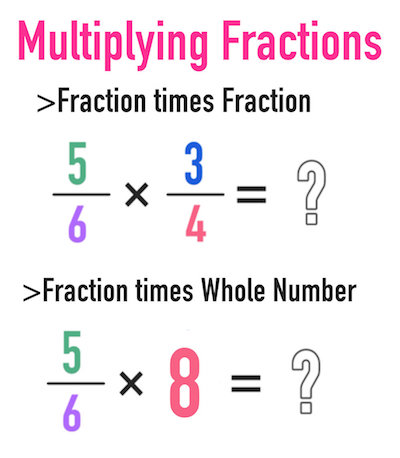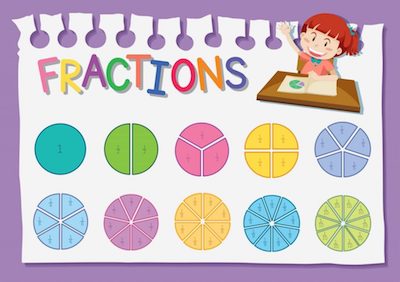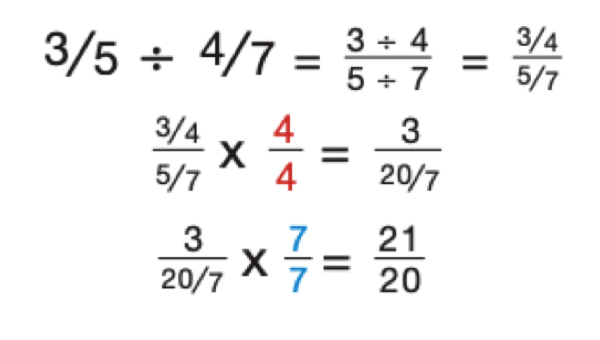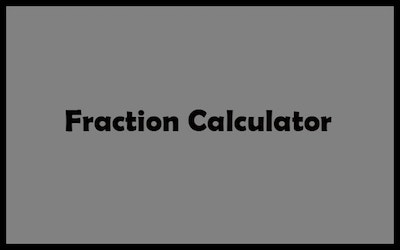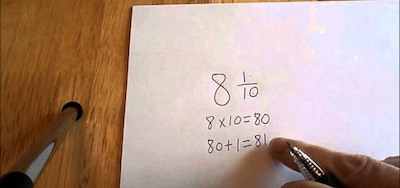While most students usually don’t struggle when they want to convert a fraction into a decimal, the opposite is not true. After all, converting a decimal to fraction tends to pose some questions. However, today, we hope that we can clarify all your doubts and questions as well as to help you finally understand how you can easily convert decimal to fraction.
Learn everything you need to know about fractions.
Before we show you how you can convert decimal to fraction in just 3 easy steps, we believe that it is important to first understand what decimals and fractions are.
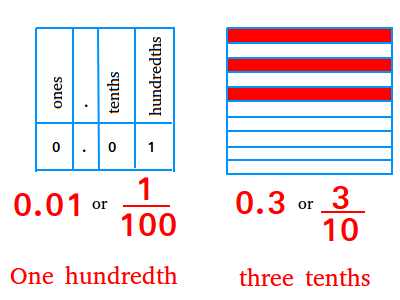
A decimal number is used to represent a non-whole number. It comes with a decimal point that is used followed bu digits. These digits represent a value that is always smaller than one.
23.4 = 20 + 3 + 0.4
or
23.4 = 20 + 3 + 4/10
A fraction represents a part of a whole number. Simply put, a fraction is simply the ratio (or the division) between the upper number that is called the numerator and the lower number that is called the denominator. A fraction is represented by numbers that are stacked vertically and are separated with a bar.
18/5
If you pay a closer look at both definitions, you can then easily see that decimals and fractions are representing the same thing – a number that is not whole.
Check out our decimal to fraction calculator.
Decimal to Fraction: How To Make The Conversion In 3 Easy Steps
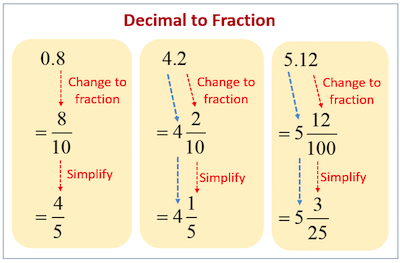
Now that you have a better grasp of decimals and fractions, it is time to see how you can easily convert a decimal to fraction. Ultimately, you are only required to use 3 simple steps.
Step #1: Rewrite the decimal number over one (as a fraction where the decimal number is numerator and the denominator is one).
Step #2: Multiply both the numerator and the denominator by 10 to the power of the number of digits after the decimal point. If there is one value after the decimal, multiply by 10, if there are two then multiply by 100, if there are three then multiply by 1,000, etc.
In the case of converting 0.25 to a fraction, there are two digits after the decimal point. Since 10 to the 2nd power is 100, we have to multiply both the numerator and denominator by 100 in step two.
Step #3: Express the fraction in simplest (or reduced form).
Looking for a decimal to fraction converter?
While these steps may seem a bit complicated, let’s check a practical example so you can easily understand how the process works.
Practical Example
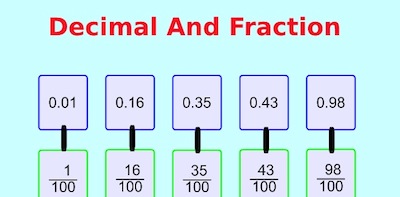
Convert 2,35 to a fraction
According to the steps we just mentioned above, the first thing that you will need to do is to divide the decimal part by 1. To make things easier, let’s isolate the decimal part first.
Check your results using our decimal to fraction conversion tool.
As you know, 2,35 = 2 + 0,35
So, just take the 0,35 and divide it by 1:
0,35/1
In the second step, you will need to multiply both top and bottom by 100 (2 digits after the decimal point so that is 10×10=100):
35/100
Then, you will need to simplify the fraction. If you divide the fraction by 5 (remember that you need to divide both the numerator and the denominator so that you can get an equivalent fraction):
35/100 = 7/20
Now, it’s time to bring back the 2 to make a mixed fraction:
2 7/20
